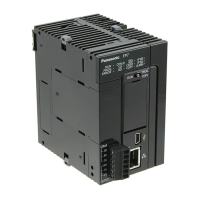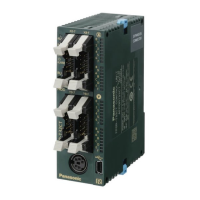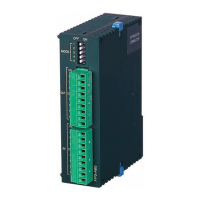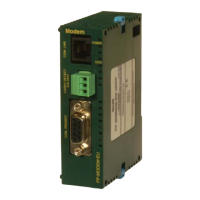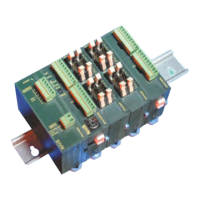2.6 Description of the memory area
2.6.1 DT Data register
■
How data register (DT) works
● Data registers are memory areas which are handled in word (16-bit) units, and are used to
store data such as numerical data that consists of 16 bits.
MV.US U or H DT n
[Example of program to write numerical values into DTn]
DTn
0 0 0 1 1 0 1 0 0 1 0 1 1 0 0 0
● When 32-bit (double word) data is handled in data registers, use two data registers as a set.
In the program, specify the number of the data register for the lower 16 bits.
■
Hold data and non-hold data
● Data registers are categorized into two types, depending on how the register operates after
powering off or switching from RUN to PROG. mode:
1. Hold type data register, which remembers the ON/OFF status immediately before the
data register is stopped and can resume operation using the same status after restarting
2. Non-hold type data register, which resets the status when the data register is stopped
● Hold type and non-hold type settings can be set for each global device and local device.
● You can set the range of hold and non-hold types in Setting of the no. of local devices to
be used (in total)>Global hold-type start no. in the "Memory Configuration" dialog box
using the tool software FPWIN GR7. If the beginning of a hold type data register is specified
using a word number, relays before that point will be non-hold types, and subsequent relays
will be hold types.
Non-hold type
Hold type
"Memory configuration" >
"Setting of the no. of local devices to be used (in total)" >
"Global holding start number"
2.6 Description of the memory area
WUME-FP7CPUPGR-12 2-27

